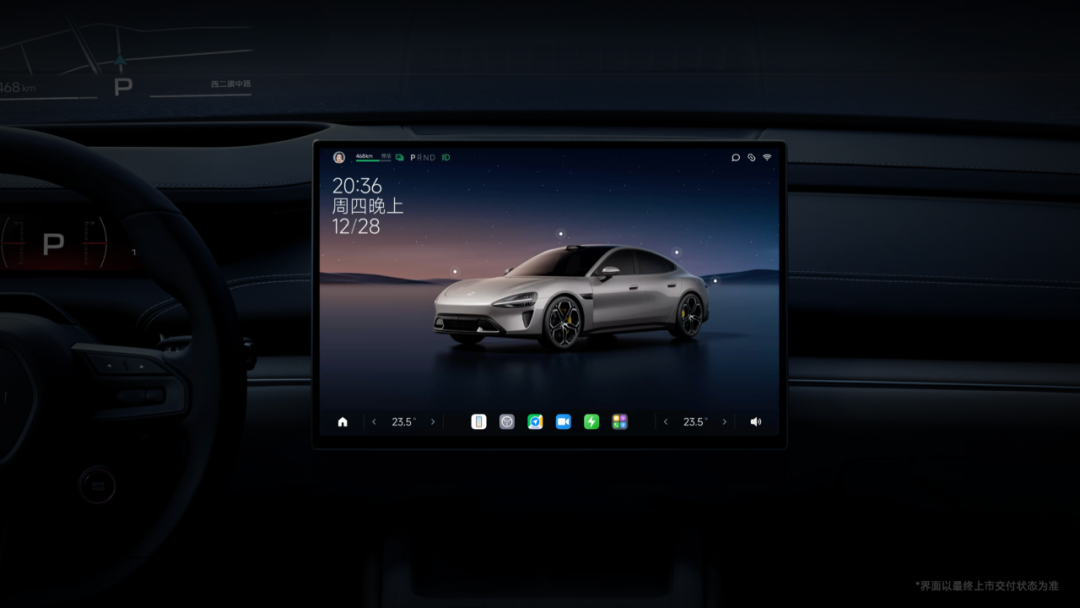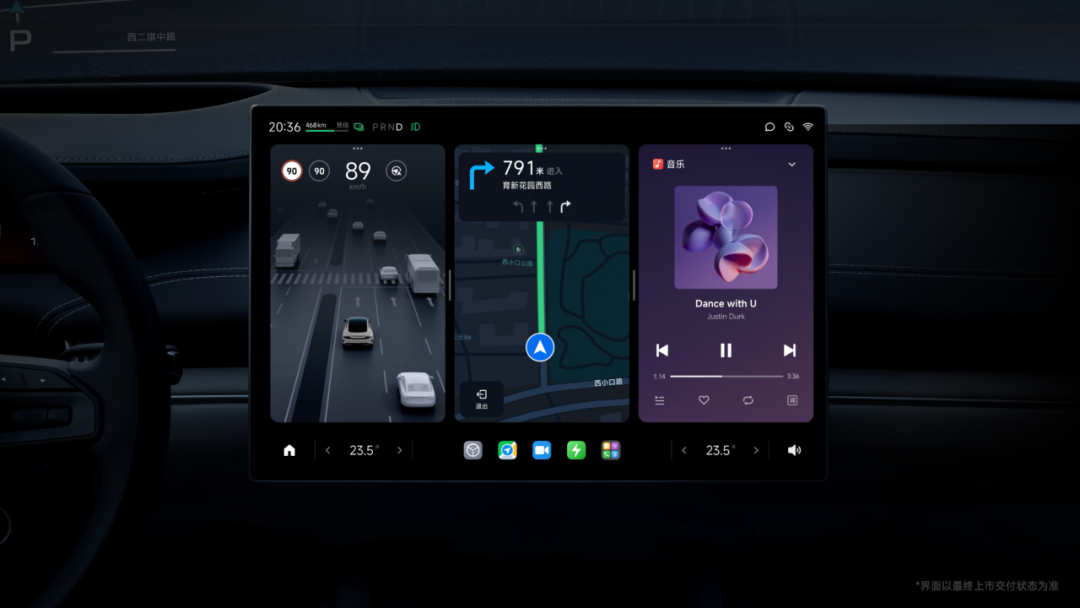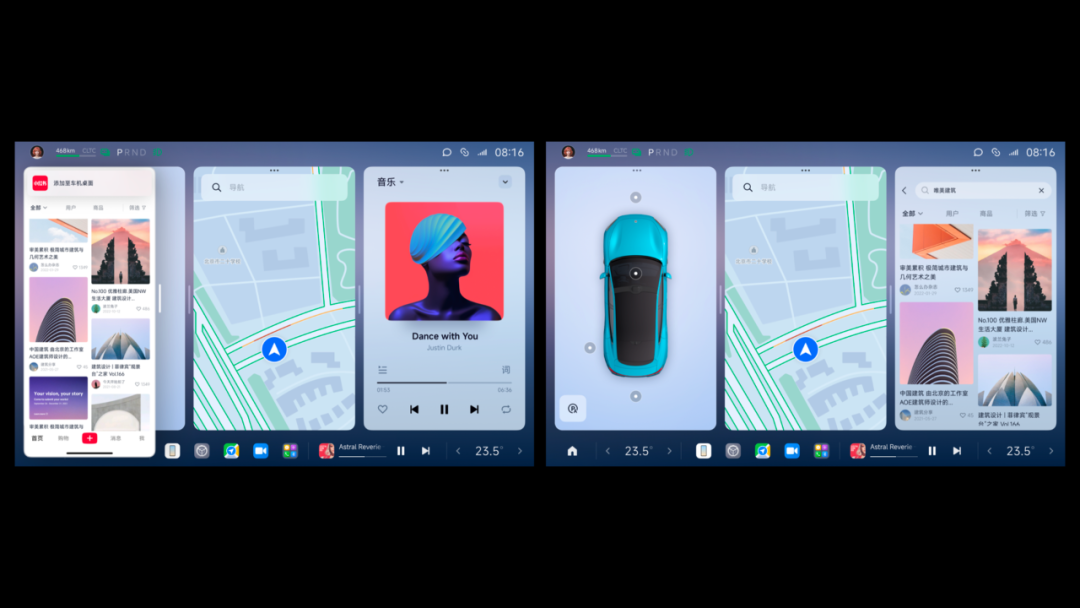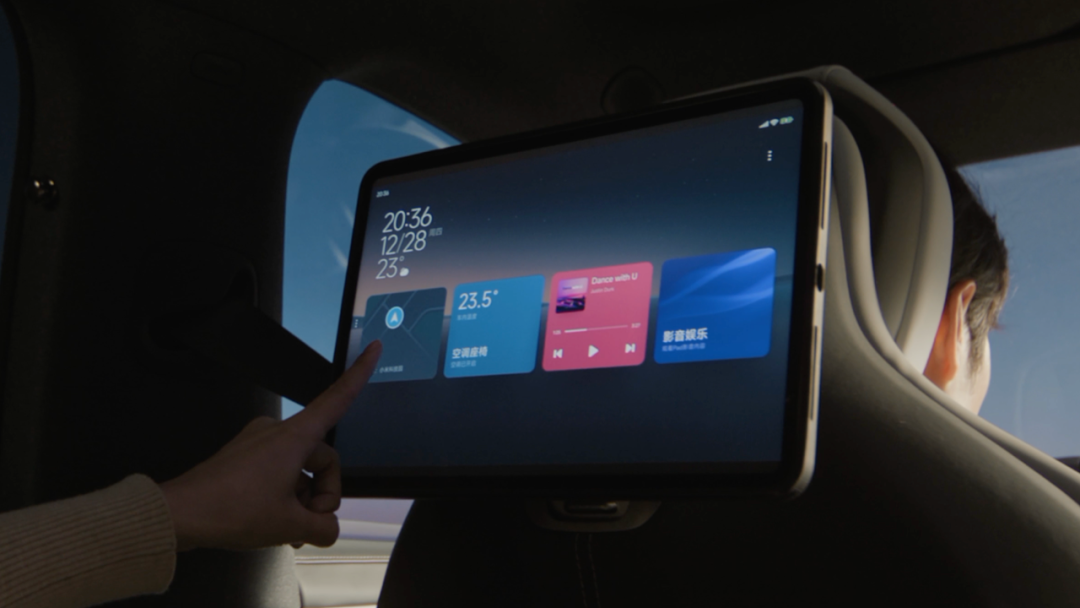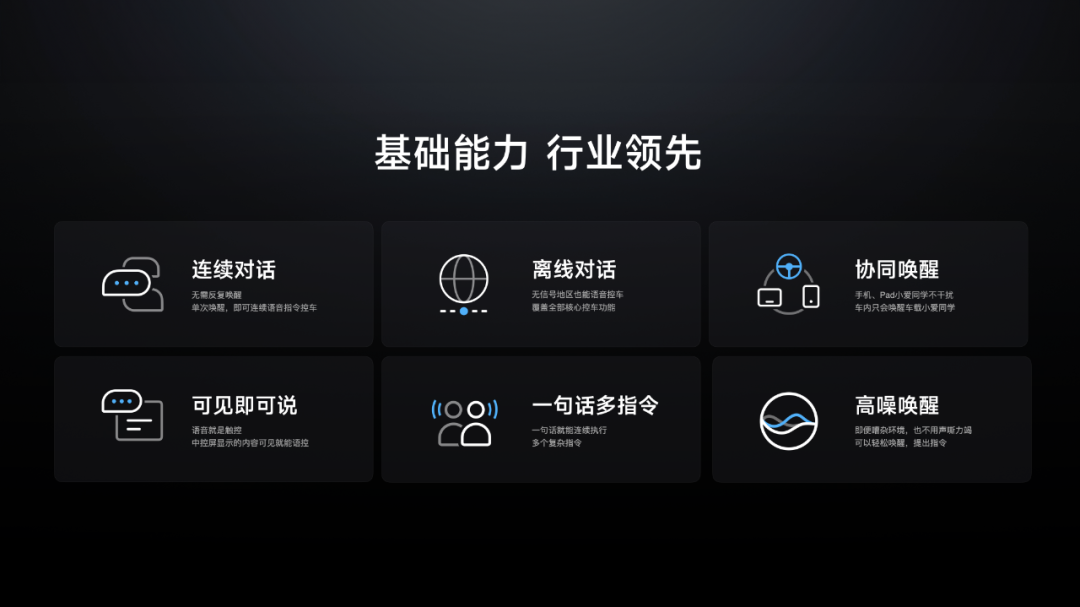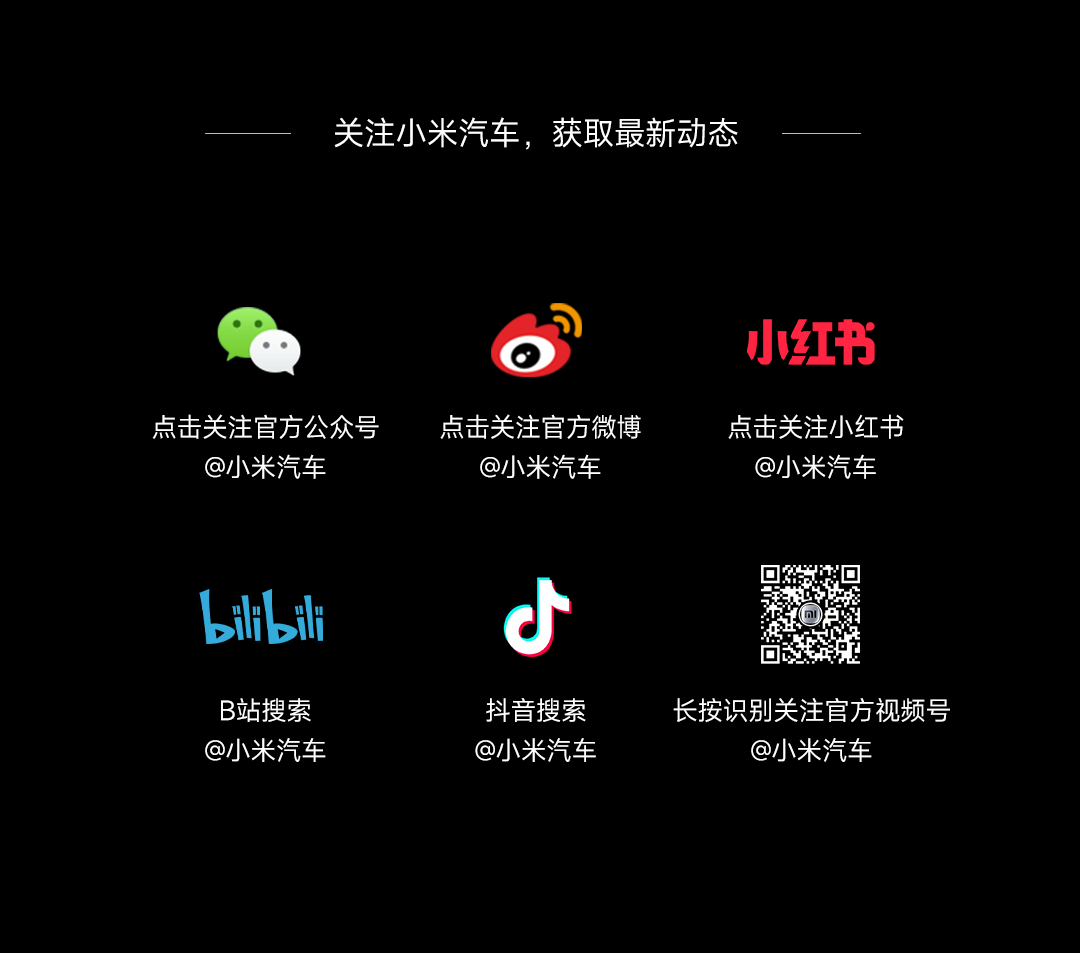"In the past decade, the issue of electrification has been addressed in the field of intelligent electric vehicles; the next decade will be about intelligence. Intelligence will be the decisive factor of this era."
Xiaomi entered the smart phone market in 2010 and is currently one of the top three global phone companies. It is also the world's largest consumer-level AIoT platform, accumulating comprehensive technological capabilities in areas such as operating systems, artificial intelligence, and robotics. These capabilities will gradually be applied to automobiles.
Smart driving + smart cabin + ecosystem will become the technological high ground for Xiaomi's participation in the competition. Xiaomi's 'People-Car-Home Full Ecosystem' unprecedentedly connects all smart terminals together, allowing seamless interconnection and collaborative capabilities, enabling everyone to experience an omnipresent smart life. Today, let me briefly introduce the latest smart technology equipped on the Xiaomi SU7.
Fully self-developed technology across the board
Intelligent assisted driving standard across the entire lineup
Intelligent driving is a key step for vehicles to evolve from transportation tools to advanced mobile spaces. Xiaomi's intelligent driving made its debut, announcing its goal to become a leader in the industry by 2024. To achieve this, we have made significant investments. Xiaomi's dedicated intelligent driving team has surpassed 1000 members, and earlier this year, we established the Autonomous Driving R&D Center in Wuhan with plans to expand by another 500 by the end of the year. Our AI lab has been in operation for 8 years, with over 3000 engineers. A tenfold investment allows for rapid iteration of intelligent driving capabilities, ensuring comprehensive advancements in technology and user experience.
At the end of last year, Xiaomi's automotive technology conference unveiled the self-developed full-stack architecture of Xiaomi's intelligent driving for the first time. This advanced architecture includes leading algorithms such as road macro models, super-resolution occupancy networks, and variable-focus BEV. The super-resolution occupancy network was included in the top international academic conference in the field of computer vision, CVPR, at the beginning of 2024, and the innovative core algorithm has received international recognition.
The more groundbreaking achievement is that Xiaomi has achieved the first mass production of end-to-end large-scale model technology in the field of intelligent driving in China. The end-to-end large-scale model replaces multiple modules previously used for perception, decision-making, and planning, allowing intelligent driving to directly input images from one end and output driving trajectories from the other end. Xiaomi's end-to-end large-scale model is the most human-like thinking level intelligent driving algorithm to date, achieving extremely narrow parking with 5cm precision and highly usable valet parking at a maximum cruising speed of 23km/h. Xiaomi's intelligent driving technology iterates rapidly, aiming for a comprehensive enhancement of user experience.
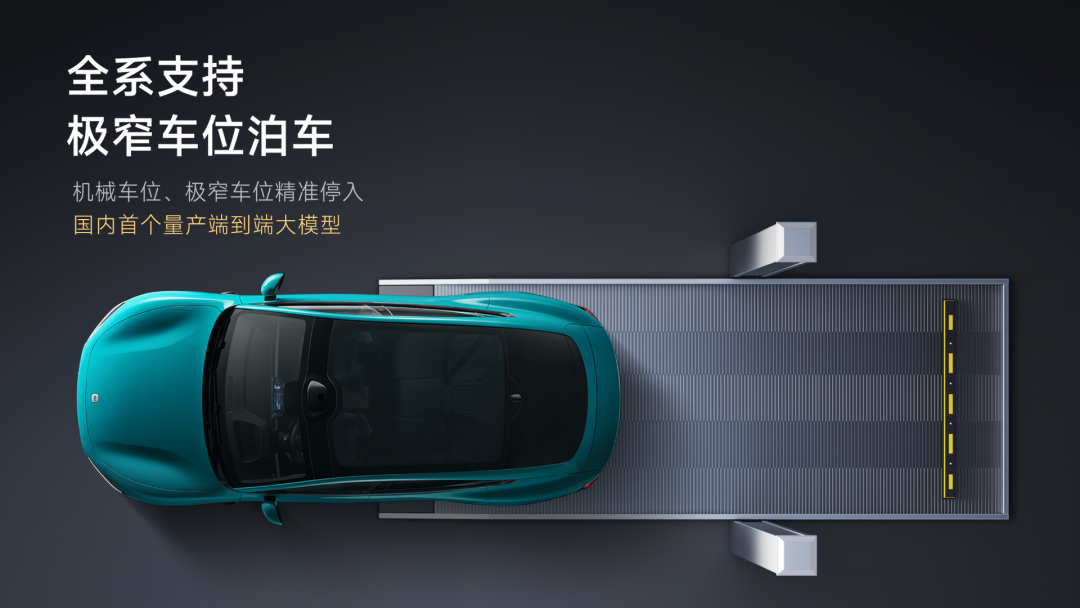 To deliver a great intelligent driving experience, it is essential to ensure consistency in user experience across different configurations. Xiaomi's intelligent driving system is divided into two solutions: Xiaomi Pilot Pro and Xiaomi Pilot Max. We adhere to the principle of technological consistency between different configurations. Both Xiaomi Pilot Pro and Max are powered by the NVIDIA DRIVE Orin computing platform and feature an 11-camera visual solution. They both utilize variable-focus BEV perception technology and end-to-end large-scale models. Both high and low configurations are based on the same technological solution and can support leading intelligent driving assistance functions to provide a superior driving experience.
Xiaomi's PengPai Intelligent Cockpit
Based on Xiaomi's PengPai OS
Intuitive interactive framework for ease of use
The hardware capabilities form the foundation of the interactive experience. The Xiaomi SU7 series comes standard with the 8295 flagship chip platform, combined with the powerful heterogeneous compatibility of Xiaomi's Penglai OS, enabling precise resource allocation of hardware resources. This setup ensures that the central control screen is responsive and operates smoothly and seamlessly.
This is just the first step. Our team has devoted tremendous effort to interactive design, which serves as the window to the overall intelligent vehicle experience. Based on feedback from early media test drives, simplicity, elegance, and a "what you see is what you get" approach are the frequent praises for the interactive design of the central control screen.
Upon boarding, what comes into view is an exquisitely detailed, finely rendered 3D vehicle model. The color and configuration of the model perfectly match reality, and the model's status synchronizes in real-time with the vehicle's status. By tapping on corresponding positions on the model, you can quickly open the front trunk, rear trunk, charging port, and more. Adjusting the spoiler or suspension will also be accompanied by seamless, intuitive animations, making the entire vehicle control process smooth and straightforward. It is easy to grasp even for first-time users, with almost zero learning curve.
△Flexible framework-based free-form window interaction
当你拨动开关,驻车界面会一镜演绎成行车界面。得益于小米澎湃OS的柔性框架能力,用户可以自由排列窗口卡片的位置,按照自己的需求调节显示比例,地图窗口更大一点方便导航,音乐窗口更大一点沉浸听歌,随心所欲、畅快自由。
Cross-platform intelligent connection,
integrating smartphones and tablets at the foundational level,enabling seamless interaction
As an ecological technology company, Xiaomi's Penglai Smart Cockpit was designed with smartphones and tablets considered integral parts of the cockpit from the outset, implementing a multi-platform native design. Inheriting Xiaomi's HyperConnect cross-platform interconnection framework capabilities, when a car owner's phone or tablet with the same account enters the vehicle, it seamlessly connects to the central control screen without any user intervention, automatically completing a series of complex steps such as identification, security authentication, and connection. This allows for direct cross-device control within the integrated device center.
Applying the one-click PIN feature from the mobile app Xiaohongshu to the central control screen in Xiaomi's Penglai Smart Cockpit
More importantly, the system integrates at the foundational level to provide a unified native interactive experience. For example, on the central control screen, direct access to the phone's mirror image allows for multitasking on a single screen, making it easier for the driver to control the phone. Furthermore, through integration at the system framework level, users can pin mobile applications to the central control screen in the form of window cards with a single click. The phone only provides computational power, while the display, sound, and interactions are all executed on the in-car system. The apps on the central control screen are not simply mirrored from the phone but can be operated independently, unlocking the full potential for the in-car system to utilize the entire ecosystem of mobile applications.
Native in-car experience for the rear expansion screen
The Xiaomi Penglai Intelligent Cabin also supports mounting two Xiaomi Pad 6S Pro 12.4 as rear expansion screens. Once connected, the tablets automatically switch to the native car control interface. Seamlessly integrated with the entire vehicle, it synchronizes real-time navigation information, allowing for the free adjustment of air conditioning, seat heating, in-car music, and other functions. It can also assist elderly passengers in adjusting their seats in the front passenger seat. If there is no one in the front passenger seat, it can still adjust the seat position to create a more spacious rear seating area.
Even if you are not a Xiaomi ecosystem user and use an iPhone or iPad, you can still enjoy a leading intelligent experience. The Xiaomi Penglai Intelligent Cabin supports wireless CarPlay integration and the rear bracket is compatible with iPads, allowing for rear-seat control through the Xiaomi Car Expansion Screen app
Empowered by large models, 'Xiao Ai tongxue'
inherits six major capabilities upon boarding,
marking the first deployment of large models on the end side
Xiao Ai Classmate is one of the earliest intelligent voice assistants launched in China. Since 2017, it has been in service for seven years, with 117 million monthly active users and being awakened up to 208 million times every day. Since April last year, Xiao Ai Classmate has fully integrated large models, transitioning from a voice assistant to a generative AI intelligent assistant, equipped with capabilities such as deep natural language understanding and multimodality.
Xiaomi's in-car Xiao Ai Classmate inherits the capabilities of Xiaomi Group
The long-term technological investment has enabled Xiao Ai Classmate to leverage the technical capabilities of the group as soon as it gets on board, achieving voice interaction functions far beyond the industry standard. For example, continuous dialogue, offline dialogue, collaborative wake-up, visible speech input, high-noise wake-up, and multi-command in a single sentence. It was first launched with access to Xiaomi's self-developed 'MiLM-1.3B' on-device large model, realizing the full-chain large model voice interaction from recognition to understanding to generation. It can not only implement text-to-image but also integrate information such as the car's location, direction, and visual data, enabling it to understand the real world like a human.
Most importantly, Xiao Ai Classmate is evolving the car. Voice interaction is far more efficient and safer than touch interaction while driving. Therefore, right from the project initiation, Xiaomi's AI team set a goal: if a function can be controlled by hand, it should be covered by voice interaction. Today, not only can you deeply control the car with Xiao Ai Classmate, but you can also control your phone, CarIoT, and even your home, endlessly expanding the boundaries of voice interaction capabilities.
As a specialist in intelligence, Xiaomi has inherited the technical capabilities of the group while also introducing unique user experience considerations. More information will be revealed for you on March 28th at 19:00.
To deliver a great intelligent driving experience, it is essential to ensure consistency in user experience across different configurations. Xiaomi's intelligent driving system is divided into two solutions: Xiaomi Pilot Pro and Xiaomi Pilot Max. We adhere to the principle of technological consistency between different configurations. Both Xiaomi Pilot Pro and Max are powered by the NVIDIA DRIVE Orin computing platform and feature an 11-camera visual solution. They both utilize variable-focus BEV perception technology and end-to-end large-scale models. Both high and low configurations are based on the same technological solution and can support leading intelligent driving assistance functions to provide a superior driving experience.
Xiaomi's PengPai Intelligent Cockpit
Based on Xiaomi's PengPai OS
Intuitive interactive framework for ease of use
The hardware capabilities form the foundation of the interactive experience. The Xiaomi SU7 series comes standard with the 8295 flagship chip platform, combined with the powerful heterogeneous compatibility of Xiaomi's Penglai OS, enabling precise resource allocation of hardware resources. This setup ensures that the central control screen is responsive and operates smoothly and seamlessly.
This is just the first step. Our team has devoted tremendous effort to interactive design, which serves as the window to the overall intelligent vehicle experience. Based on feedback from early media test drives, simplicity, elegance, and a "what you see is what you get" approach are the frequent praises for the interactive design of the central control screen.
Upon boarding, what comes into view is an exquisitely detailed, finely rendered 3D vehicle model. The color and configuration of the model perfectly match reality, and the model's status synchronizes in real-time with the vehicle's status. By tapping on corresponding positions on the model, you can quickly open the front trunk, rear trunk, charging port, and more. Adjusting the spoiler or suspension will also be accompanied by seamless, intuitive animations, making the entire vehicle control process smooth and straightforward. It is easy to grasp even for first-time users, with almost zero learning curve.
△Flexible framework-based free-form window interaction
当你拨动开关,驻车界面会一镜演绎成行车界面。得益于小米澎湃OS的柔性框架能力,用户可以自由排列窗口卡片的位置,按照自己的需求调节显示比例,地图窗口更大一点方便导航,音乐窗口更大一点沉浸听歌,随心所欲、畅快自由。
Cross-platform intelligent connection,
integrating smartphones and tablets at the foundational level,enabling seamless interaction
As an ecological technology company, Xiaomi's Penglai Smart Cockpit was designed with smartphones and tablets considered integral parts of the cockpit from the outset, implementing a multi-platform native design. Inheriting Xiaomi's HyperConnect cross-platform interconnection framework capabilities, when a car owner's phone or tablet with the same account enters the vehicle, it seamlessly connects to the central control screen without any user intervention, automatically completing a series of complex steps such as identification, security authentication, and connection. This allows for direct cross-device control within the integrated device center.
Applying the one-click PIN feature from the mobile app Xiaohongshu to the central control screen in Xiaomi's Penglai Smart Cockpit
More importantly, the system integrates at the foundational level to provide a unified native interactive experience. For example, on the central control screen, direct access to the phone's mirror image allows for multitasking on a single screen, making it easier for the driver to control the phone. Furthermore, through integration at the system framework level, users can pin mobile applications to the central control screen in the form of window cards with a single click. The phone only provides computational power, while the display, sound, and interactions are all executed on the in-car system. The apps on the central control screen are not simply mirrored from the phone but can be operated independently, unlocking the full potential for the in-car system to utilize the entire ecosystem of mobile applications.
Native in-car experience for the rear expansion screen
The Xiaomi Penglai Intelligent Cabin also supports mounting two Xiaomi Pad 6S Pro 12.4 as rear expansion screens. Once connected, the tablets automatically switch to the native car control interface. Seamlessly integrated with the entire vehicle, it synchronizes real-time navigation information, allowing for the free adjustment of air conditioning, seat heating, in-car music, and other functions. It can also assist elderly passengers in adjusting their seats in the front passenger seat. If there is no one in the front passenger seat, it can still adjust the seat position to create a more spacious rear seating area.
Even if you are not a Xiaomi ecosystem user and use an iPhone or iPad, you can still enjoy a leading intelligent experience. The Xiaomi Penglai Intelligent Cabin supports wireless CarPlay integration and the rear bracket is compatible with iPads, allowing for rear-seat control through the Xiaomi Car Expansion Screen app
Empowered by large models, 'Xiao Ai tongxue'
inherits six major capabilities upon boarding,
marking the first deployment of large models on the end side
Xiao Ai Classmate is one of the earliest intelligent voice assistants launched in China. Since 2017, it has been in service for seven years, with 117 million monthly active users and being awakened up to 208 million times every day. Since April last year, Xiao Ai Classmate has fully integrated large models, transitioning from a voice assistant to a generative AI intelligent assistant, equipped with capabilities such as deep natural language understanding and multimodality.
Xiaomi's in-car Xiao Ai Classmate inherits the capabilities of Xiaomi Group
The long-term technological investment has enabled Xiao Ai Classmate to leverage the technical capabilities of the group as soon as it gets on board, achieving voice interaction functions far beyond the industry standard. For example, continuous dialogue, offline dialogue, collaborative wake-up, visible speech input, high-noise wake-up, and multi-command in a single sentence. It was first launched with access to Xiaomi's self-developed 'MiLM-1.3B' on-device large model, realizing the full-chain large model voice interaction from recognition to understanding to generation. It can not only implement text-to-image but also integrate information such as the car's location, direction, and visual data, enabling it to understand the real world like a human.
Most importantly, Xiao Ai Classmate is evolving the car. Voice interaction is far more efficient and safer than touch interaction while driving. Therefore, right from the project initiation, Xiaomi's AI team set a goal: if a function can be controlled by hand, it should be covered by voice interaction. Today, not only can you deeply control the car with Xiao Ai Classmate, but you can also control your phone, CarIoT, and even your home, endlessly expanding the boundaries of voice interaction capabilities.
As a specialist in intelligence, Xiaomi has inherited the technical capabilities of the group while also introducing unique user experience considerations. More information will be revealed for you on March 28th at 19:00.
The original text was originally published on the WeChat public account (Xiaomi Motors):Understanding Xiaomi's Intelligent Vehicle as a Whole

